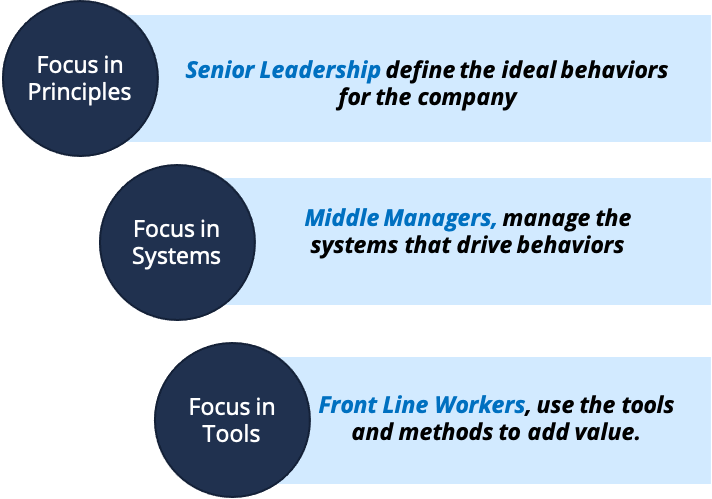Organizational culture is how people behave when they think no one is watching. That subtle mix of values, beliefs, traditions, and habits brings a team together or tears them apart. It’s what drives employee engagement, fosters innovation, and even impacts profitability.
A solid organizational culture also supports employee retention and growth – because employees who feel good about where they work are more likely to stay there.
An organizational culture that enables employees to do their best work is an asset to any company. It increases employee engagement and productivity while lowering turnover costs and boosting innovation and collaboration.
1. Be brave and make an honest assessment of your current culture.
When it comes to organizational culture, what you see isn’t always what you get. Many companies have a strong reputation for excellence in one area or another, even though their employees aren’t entirely happy. Sometimes, it’s hard to see the cracks in the organizational culture because it’s so familiar to everyone who works there. When building a more robust organizational culture, starting with an honest assessment of where you are right now is essential. It might not feel good, but it’s a necessary first step.
If you work in a large company, meeting with a representative sample of employees from different divisions, locations, and levels is helpful. Ask them about the culture of their departments and what the most significant issues are there. Or, if you work in a smaller company, you may schedule interviews with employees one-on-one. It’s essential to get a wide variety of opinions and not just hear from the most vocal people.

2. Define the guiding principles and values of your organization
Once you’ve identified the issues you’re dealing with and have done honest introspection, it’s time to turn them into actionable items. Each company has its own values and guiding principles, which can be used to build a healthier organizational culture.
For example, if you want to build a culture more focused on long-term engagement than short-term results, one way to do that is by assuring that employees are expected to be at the company for the long haul. There are different ways to go about this (growth and development programs, special projects….), and you’ll have to pick a few that feel authentic to your company culture and consistent with your strategy as a company.
3. Create accountability by defining the behaviors you want to see more of.
The next step is to take a look at the behaviors that are currently holding your organization back. This can be, for example, the lack of collaboration or employees who are more focused on getting the work done than working together. Another one might be an absence of trust between colleagues.
Whatever you see, you need to define the desired behavior and then create ways to hold people accountable for moving in the wrong direction. You can start with the top-level executives and managers who have the power to change things quickly. They will serve as good role models and can move the needle quickly. Next, identify the middle-level people who have the power to influence the behaviors that need to change. Finally, identify the low-level employees who could use some support to help them navigate the new behaviors. You can create a positive ripple effect in the culture by influencing change at all three levels.
4. Talk to people at all levels

The best way to understand the issues of your organizational culture is to talk to people at all levels, more critical those on the frontline, why because they are the biggest number, so they represent the majority of your culture, and because they are those who add value to the product or service you deliver.
Getting formal feedback is also essential; if you’re in a large company, this may take the form of a survey or evaluation. In smaller companies, having more informal conversations with employees about the most significant issues in the culture might be helpful. If you’re talking to senior leaders, one topic worth exploring is their view of the company culture. How do they see it? What do they think the most significant issues are? What are they doing to contribute to the culture?
Leaders should ensure there is only one culture in their company, not one on the shop floor, and another with the commercial areas or R&D; if this happens, your organization will suffer from a sick culture, make sure to align and banish any obstacle or barrier that is generating alternate cultures in your organization.
5. Assess internal employee Growth
One of the indicators of an unhealthy organizational culture is when employees work there for a long time and don’t advance, and organizations often bring people from outside to fill critical roles. If you see that happening in your company, it could signify that you need to work on your culture. When employees feel stuck in place, it tends to be because of one of two things: they aren’t interested in moving up or aren’t allowed to do so. The solution is to address both issues. Ensure employees know what opportunities for advancement are available and have the skills and experience necessary to take advantage of those opportunities. If you’re in a large company, you may need to do this on a company-wide scale. If you’re in a smaller company, you may be able to focus on just one department or work group.
Conclusion
A strong organizational culture is an asset to any company. It increases employee engagement and productivity while lowering turnover costs and boosting innovation and collaboration.
There are different ways to go about this, but you’ll have to pick a few that feel authentic to your company culture and consistent with your strategy as a company. You can create a positive ripple effect in the culture by influencing change at all three levels.





